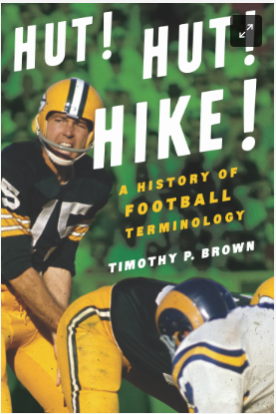The Origins of the Dodgers Name and Colors
Were you aware that this was not the first name of the Brooklyn ballclub? In 1883, according to legend and archives, they were launched as the Brooklyn Atlantics, which they adopted from an earlier ballclub that failed to survive. The franchise pointed to the 1884 season when the nine of the Borough took the field as the Brooklyn Grays because of the color of their uniforms, a gray button-down with the word Brooklyn stitched vertically down the center. It was common practice back in the day to adopt the name of your team colors.
The MLB then states that the name was changed in 1888 again to the Brooklyn Bridegrooms after eight roster members married that season. A post on the LA Dodger Talk website blog says that the Bridegroom's playing shirts were photographed with collars on them and laced up the front ending in what looks like a string tie. 1891, it morphed again into the Ward's Wonders soon after John Montgomery Ward took over as the club's managing partner. With the management change in 1893, the team had folks calling them the Foutz's Fillies, named after Dave Foutz's tenure managing the Brooklyn Nine.
Still then, a few seasons later in the 20th-Century, the team garnered the moniker of the Brooklyn Superbas. This had an interesting connection. Ned Hanlon took over as the team's field manager. A famous vaudeville act was touring named "Superba," and the Hanlon Brothers produced it. Ned Hanlon was not known to be related to the brothers or their stage production other than in name association only. Well, it stuck in the press and with fans everywhere, and the team name was famous as the Superbas for a few years, even though on the books, they were officially still the Dodgers. In 1910, the team sported a solid-colored uni with a vertical button cover flap overlay with the word Brooklyn neatly sewn.
The sixteen-year run of Wilbert Robinson as club manager that started in 1915 led to the secondary nickname of the Brooklyn Robins. In years after that, the fans of the Dodgers endeared a series of names like "the Flock," the "Bums," and "Dem Bums." These came about from some cartoon images produced by famed artist William Mullin. Of course, if someone outside of the Brooklyn Fandon circle would call the bums, it was fighting words, but inhouse, it showed the love and support of their followers. In 1916, the uniform shirts of these teams often were solid gray or a grid of pinstripes or plaid design with a large "B" on the left chest area. During WWI, the B was replaced with a patriotic and appropriate American flag supporting the troops overseas. The name "Dodgers" was first sewn on the players' uniforms in 1933, and the famous Brooklyn "B" was moved to the right sleeve. Many times for road games in the coming years, the word "Brooklyn" replaced the "Dodgers" name on the front chest of players.
As for the color of "Dodger Blue," that is an interesting story all its own.
The reference is not to the particular color the team wore, as many may believe. No, the term came to be a few decades ago when former Brooklyn player and LA manager Tommy Lasorda claimed that he bled Dodger blue. In 1989, an azure shade was added to the official color database, and it is this Dodger Blue that is plastered all over Dodger Stadium, incorporated into the team gear and on team memorabilia and fanfare.
Los Angeles Dodgers
The Los Angeles Dodgers also played as LA Dodgers, Brooklyn Dodgers, Brooklyn Robins, Brooklyn Superbas, Brooklyn Bridegrooms, Brooklyn Grooms, Brooklyn Grays, and Brooklyn Atlantics
A Summary of Ted Williams' Baseball Legacy
Ted Williams, nicknamed "The Splendid Splinter" for his lanky physique and graceful swing, carved his name in baseball history not just with statistics, but with a singular dedication to hitting excellence. His 19-year career, spent entirely with the Boston Red Sox, was a masterclass in controlled aggression and a testament to his unwavering passion for the game.
A Prolific Hitter and Triple Crown Winner:
Williams' offensive prowess was undeniable. He holds a career batting average of .344, the highest of any qualified player in the post-dead-ball era (after 1920). He led the American League in batting average six times, a feat surpassed only by Ty Cobb, and won the prestigious Triple Crown (leading the league in batting average, home runs, and RBIs) twice, in 1942 and 1947.
His pursuit of hitting perfection was legendary. In 1941, he achieved the unthinkable, batting .406, the last MLB player to hit over .400 in a single season. This accomplishment solidified his place among the game's greatest hitters and cemented his reputation as a hitting savant.
Beyond the Statistics:
Beyond his statistical dominance, Williams' impact went far deeper. He possessed a deep understanding of the art of hitting, meticulously studying pitchers and perfecting his swing. He was a fierce competitor, known for his intense focus and unwavering determination to succeed at the plate.
However, Williams' career was not without its challenges. He lost five prime years to serving in the United States Navy and Marine Corps during World War II, a sacrifice that undoubtedly impacted his career statistics and longevity. Additionally, his relationship with the Red Sox and the Boston media was often strained, with his blunt personality and outspoken nature creating friction at times.
A Complex Legacy and Enduring Impact:
Despite the complexities, Williams' legacy remains unquestioned. He was inducted into the Baseball Hall of Fame in 1966, and his influence continues to inspire generations of players and fans alike. His passion for the game, his dedication to hitting perfection, and his place among the game's greatest hitters solidify his position as one of baseball's true legends, forever earning him the title of "The Splendid Splinter."
Ted Williams Becomes Last MLB Player To Hit .400
Born August 30, 1918, in San Diego, CA, was Baseball Hall of Fame outfielder Ted Williams.
Ted Williams wore the number 9 on the Boston Red Sox (1939-42 and after military service 1946-60) for 19 seasons as he batted 0.344 for his career, had a Base percentage of 0.634, with 521 career Home Runs.
William's nicknames included The Kid, Teddy Ballgame, Splendid Splinter or Thumper. Ted was Inducted as Player to the Baseball Hall of Fame in 1966. He is one of the top MLB players to have worn the Jersey Number 9. MLB Number 9 Jersey
Origin of the Pittsburgh Pirates Name
How Did the Pittsburgh Pirates Get Their Name?
Immediately, I realized that the Pirates did not start as the Pirates and technically did not even play in the City of Pittsburgh at their onset. By today's standards, they did play in Steeltown, but the area of the Burgh where their home games were was called something different. April 15, 1876, according to the MLB's official website, was the start of the ball club, known only as the Pittsburgh Alleghenys. Back then, the Burgh was two different municipalities: Pittsburgh south of the Rivers and, on what is now the North Side, the town of Allegheny City, Pennsylvania. The North Side is where Three Rivers Stadium was, and now PNC Park and Heinz Field stand today. It is also where pro football was first played when Pudge Heffelfinger was paid to play on the gridiron. Anyway, the Alleghenys also played ball on the rivers' northern side at Union Park. Since their home field was in the "metropolis" of Allegheny City, it was an easy naming choice for the team. Playing at first as an independent, they eventually joined a minor league for a year in 1877 called the International Association. It must not have worked so well because they disbanded after that season. A few years passed, and in 1882, the club reformed as the Alleghenys once again and joined the American Association of Baseball. They soon changed home venues to Recreation Park, where Pudge played, and jumped to a rival conference of teams known as the National League in 1887. Now, that association sounds familiar. Pittsburgh of the National League! The club's first game in the NL was on April 30, 1887, when they defeated the Chicago White Stockings, 6-2.
The 1882 Pittsburgh Alleghenys baseball club courtesy of Wikimedia Commons.
That may have been the National League's highlight game for the first few years. The Allegheny was a dreadful product, finishing at least fifth place in the 8-team league. Now, that sounds familiar to us modern-day Pittsburgh baseball fans. It got so bad that in 1890, even the good players in the club decided to bail and go to other, more competitive squads. Many jumped to a new team, the Pittsburgh Burghers Club, and played in a start-up Player's League. The 1890 record of the Alleghenys was a dreadful 23-113, ugh! It didn't seem like it at the time, but things were about to change with the team's fortunes, and who would've thought it would get much better? First, the Players League folded after just one season, and the players who had left other leagues to join those clubs were expected to return to their previous teams in 1891.
The Alleghenys did see some returning players but also watched for other opportunities to improve. They had their eye keenly on second baseman Lou Bierbauer, who in 1889 played for the Philadelphia Athletics in the American Association before spending a year with the Brooklyn Ward's Wonders in the Players League in 1890. Bierbauer was a free agent, and being a student-athlete, almost everybody and their brother wanted his services on their team. One thing the Alleghenys had on their side was the prominent bonus realtors always claim, "Location, location, location!" Bierbauer lived in the offseason 100 miles due North in Erie, Pennsylvania. Yes, it is also the locale of your Sports Jersey and Pigskin Dispatch websites and podcasts.
So Allegheny's manager Ned Hanlon makes a beeline to Erie to start talking to Lou B. According to Sporting News founder Alfred Spink, in his 1910 book The National Game, Hanlon traveled to the Northwest corner of PA in the dead of winter. Take it from me; that is not a trip for the weary-hearted! Spinks says Hanlon had to cross a frozen harbor, which I will assume is Presque Isle Bay, and that Bierbauer may have lived on what is now Presque Isle State Park, an island at the time but has since been connected by a land bridge. The story says that Hanlon traveled to Bierbauer's shack during a bitter storm; the sought-after second baseman probably felt obliged to let the now-freezing NL manager into his how-to-warm by the fire. Hanlon was persistent with the opportunity and inked Bierbauer to his club before leaving.
The Philadelphia Athletics and the other members of the American Association were livid when they found out that they could not resign the star and accused Hanlon and the Alleghenys of utter "piracy" of their player. Probably to stick it to the A's a bit more, the Pittsburgh club adopted the moniker of the Pirates for the 1891 season and beyond. Quite a story indeed to get a nickname, and it had a lot to do with something I am pretty familiar with a winter storm in Erie, PA.
Reds Origin
Official Cleveland Guardians Website | MLB.com
The Cleveland Guardians, formerly known as the Indians, boast a rich history stretching back to 1894, but they haven't always existed under the same name or even in the same league. Before becoming the Guardians, they morphed through several iterations, each leaving its mark on the team's legacy. Here's a brief overview of these earlier incarnations:
The Minor League Beginnings (1894-1900):
-1894-1895: The team started as the Columbus Buckeyes in the Western League, a minor league.
-1896-1899: They relocated to Grand Rapids, Michigan, briefly becoming the Grand Rapids Furniture Makers.
1900: Finally settling in Cleveland, they adopted the name Cleveland Lake Shores.
Entering the Major Leagues (1901-Present):
-1901: Joining the newly formed American League, the team became the Cleveland Blues.
1902: A swift name change to the Cleveland Bronchos.
-1903-1914: Named after famed player-manager Napoleon Lajoie, they donned the moniker Cleveland Naps.
-1915-2021: After Lajoie's departure, the team adopted the now-controversial name Cleveland Indians, referencing Native American imagery.
-2022-Present: Responding to concerns about cultural appropriation, the team formally transitioned to the Cleveland Guardians.
Each transition reflected changing times, trends, and ownership decisions. The early minor league teams laid the foundation, while the major league iterations saw the development of fan bases, iconic players, and championship wins (1920 and 1948 World Series titles). While the name change in 2022 sparked conversation and debate, it signifies a new chapter in the team's journey, carrying the legacy of its predecessors while evolving towards a more inclusive identity.
Stay tuned as we delve deeper into each era, exploring the unique stories, personalities, and achievements that shaped the Cleveland Guardians we know today!
Michael Jordan A Legacy Soaring beyond Statistics
Early Glory and College Stardom: Born in Brooklyn, Jordan honed his skills on North Carolina courts, leading his team to a national championship with a last-second shot in 1982. Drafted by the Chicago Bulls in 1984, he instantly captured the hearts of fans with his electrifying scoring ability and infectious enthusiasm.
Air Jordan Takes Flight: Nicknamed "Air Jordan" for his seemingly airborne feats, he dominated the league with his athleticism and scoring prowess. Five MVP awards, ten scoring titles, and six NBA championships solidified his reputation as a winner, leading the Bulls to a two-peat in the late 80s and a second three-peat in the 90s.
Beyond the Basketball Court Jordan's impact extended beyond the hardwood. His iconic Nike Air Jordan shoe line revolutionized sneaker culture, while his charismatic personality made him a global marketing phenomenon. He faced setbacks, including a brief retirement to play baseball, but returned with renewed hunger, proving his greatness remained undimmed.
Legacy for the Ages: With six Finals MVP awards, a Defensive Player of the Year trophy, and numerous scoring records, Jordan's place as one of the greatest basketball players is undisputed. But his legacy goes deeper. He inspired generations with his work ethic, competitive spirit, and commitment to excellence. He pushed the boundaries of the game, redefined athletic performance, and became a symbol of hope and possibility.
Even today, over a decade after his final retirement, Michael Jordan's image continues to grace shoes, jerseys, and posters. His name remains synonymous with basketball excellence, reminding us that dedication, talent, and an unwavering will to win can propel one to unimaginable heights.
A Visual History of the Dodgers' Uniform Evolution
Born as the Brooklyn Atlantics in 1883, the team donned simple gray flannel uniforms embroidered with a red "A." With their hand-me-down attire, they earned the nickname "Bums," a moniker proudly displayed on their caps in later years. The arrival of Jackie Robinson in 1947 brought groundbreaking change, not just in baseball but also in the team's visual identity. The classic Brooklyn Dodger blue, introduced in 1938, became synonymous with desegregation and progress.
The move to Los Angeles in 1958 marked a major shift. Initially retaining the Brooklyn logo, the team experimented with variations until 1962, finally settling on the now-iconic interlocking "LA" emblem, designed by legendary sportswriter, Furman Bisher. This logo, symbolizing the merging of Brooklyn's legacy with its new Californian home, remains a cornerstone of their identity.
The uniforms themselves underwent stylistic changes throughout the decades. The 1960s saw a sleeker, modern look with pinstripes and white piping. The 1970s introduced the red alternate jersey, originally worn just on Fridays, which later became a fan favorite. The 1980s ushered in the classic white road jersey with the interlocking "LA" in blue script, a timeless design still worn today.
Special occasions prompted commemorative uniforms, further enriching the Dodgers' visual history. The powder blue "Sunday whites" from the 1970s and the throwback Brooklyn-inspired jerseys worn in recent years pay homage to the team's diverse heritage. Collaboration with artists like Takashi Murakami added a contemporary flair, pushing the boundaries of traditional uniform design.
Modernity brought technological advancements, with moisture-wicking fabrics and performance designs prioritizing player comfort. Yet, the core elements – the blue and white colors, the interlocking "LA" logo, and the clean, classic lines – remain faithfully preserved.
How Atlanta Baseball Came to Be the Braves
The Atlanta Braves, boasting a rich history dating back to 1871, are the product of several team mergers and relocations. Here's a glimpse into the evolution of the various teams that contributed to the Braves' legacy:
Boston Beaneaters (1871-1906):
-The original iteration, known for their "beanball" tactics, won four World Series titles and established a fierce rivalry with the New York Yankees.
-Faced financial struggles and declining attendance, leading to a name change in 1907.
Boston Doves (1907-1910):
-Brief stint known for the iconic white dove logo and player Babe Ruth's early appearances.
-Continued financial woes led to another name change.
Boston Rustlers (1911):
-Short-lived name referencing local businesses involved in the team's ownership.
Boston Braves (1912-1935):
-Found more success under this moniker, capturing two World Series titles and witnessing the rise of stars like Rabbit Maranville.
-Facing financial pressure again, the team was sold and relocated to...
Boston Bees (1936-1940):
-A period of mediocrity under a new name, marred by low attendance and player departures.
Boston Braves (1941-1952):
-Back to the familiar name, but financial woes persisted.
-Despite boasting stars like Warren Spahn and Hank Aaron, the Boston Braves couldn't compete with the Red Sox, prompting another relocation.
Milwaukee Braves (1953-1965):
-A new chapter in Milwaukee brought success! They captured the 1957 World Series championship with iconic players like Eddie Mathews and Lew Burdette.
-However, facing stadium issues and declining attendance, they opted for another move.
Atlanta Braves (1966-present):
-Settling in Atlanta, the team embraced their new Southern identity and continued their winning ways.
-They secured 14 consecutive division titles in the 1990s and captured another World Series title in 1995.
Thus, the Atlanta Braves represent a unique tapestry woven from different teams and cities. Each era contributed to their rich history, loyal fan base, and winning tradition, solidifying their place as one of baseball's most storied franchises.
Willie Stargell A Powerhouse with a Smile - A Summary of his Baseball Career
A Career Defined by Power:
Stargell was one of the most prolific power hitters in baseball history. He amassed 475 career home runs, ranking 19th all-time at the time of his retirement in 1982. He led the National League in home runs twice and had 13 consecutive seasons with at least 20 home runs, a feat achieved by only a handful of players.
Beyond the Statistics:
Pops wasn't just about power. He was a well-rounded player, batting over .300 four times in his career and finishing with a lifetime batting average of .282. He also possessed a strong throwing arm and was a reliable outfielder.
Leadership and Legacy:
Stargell's impact extended beyond the field. He was a vocal leader in the clubhouse, known for his positive attitude and ability to motivate his teammates. He was also a role model for young players, earning the nickname "Pops" for his fatherly presence.
World Series Champion:
Willie was instrumental in leading the Pirates to their two World Series titles in 1971 and 1979. He earned the World Series Most Valuable Player award in 1979, becoming the first player in Major League Baseball history to win the National League Most Valuable Player Award, the National League Championship Series MVP award, and the World Series MVP award in the same season.
Beyond Baseball:
Stargell was also a respected figure in the community of Pittsburgh. He was known for his involvement in charitable causes and his genuine connection with fans. He was inducted into the Baseball Hall of Fame in 1988, solidifying his place among the game's greatest players.
In conclusion, Willie Stargell was more than just a baseball player; he was an icon. He was a symbol of power, leadership, and community spirit. His legacy continues to inspire fans both in Pittsburgh and across the baseball world.
Willie Stargell had one of the most remarkable careers, seeing multiple waves of great teams on the Pittsburgh Pirates roster. Willie Stargell played the position of Left Fielder, First Baseman, Right Fielder, and Center Fielder wearing the number on the Pittsburgh Pirates (1962-82) for 21 seasons as he batted 0.282 for his career, had an On Base percentage of 0.529, with 475 career Home Runs, and winning two World Series Championships. Pops is one of the top MLB players to have worn the Number 8 jersey.





.jpg?https://jerseydispatch.com/pfeL/p/c312642c0431e75b485e432232c99c1c/website/Sports-History-Photo-of-the-Day/February-Images/February-4-Image/images/.Strathconas_First_Hockey_Team_(21879505322).jpg)




